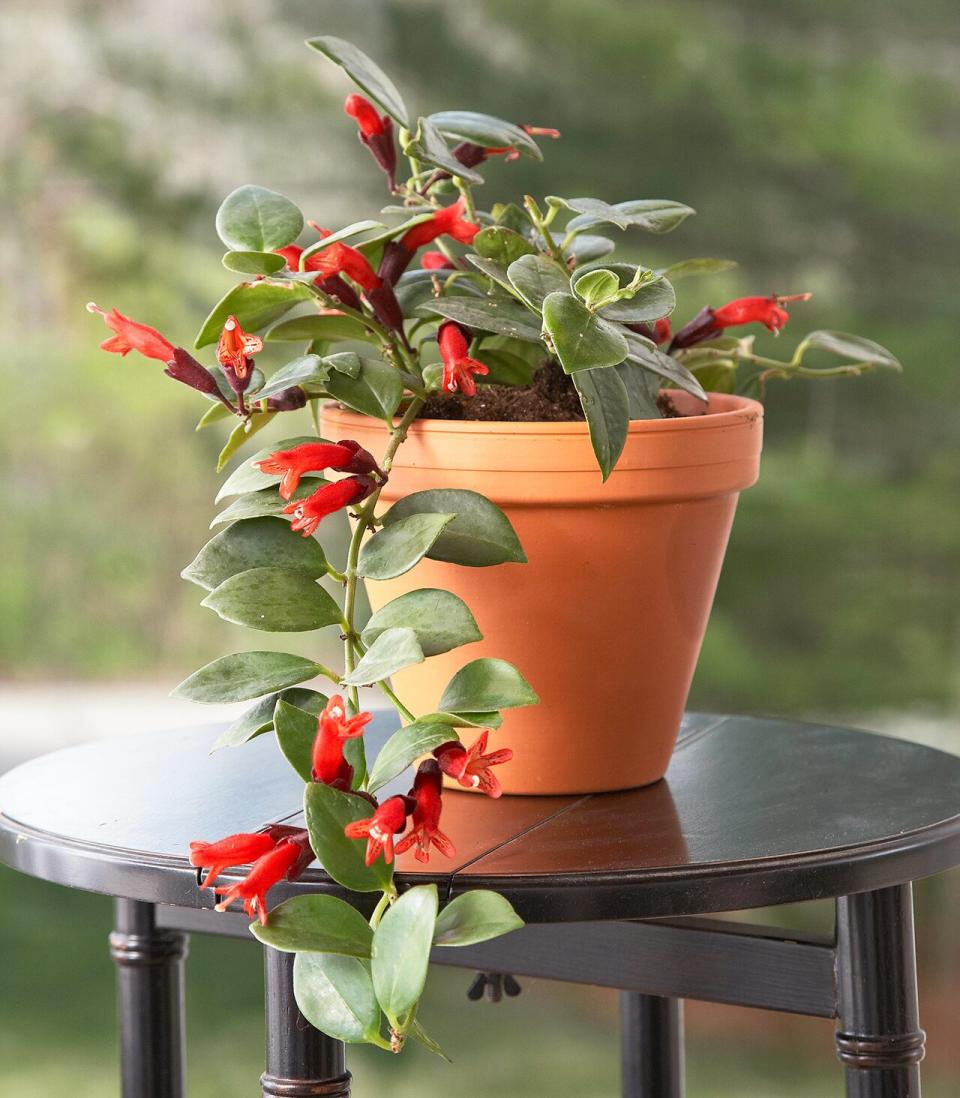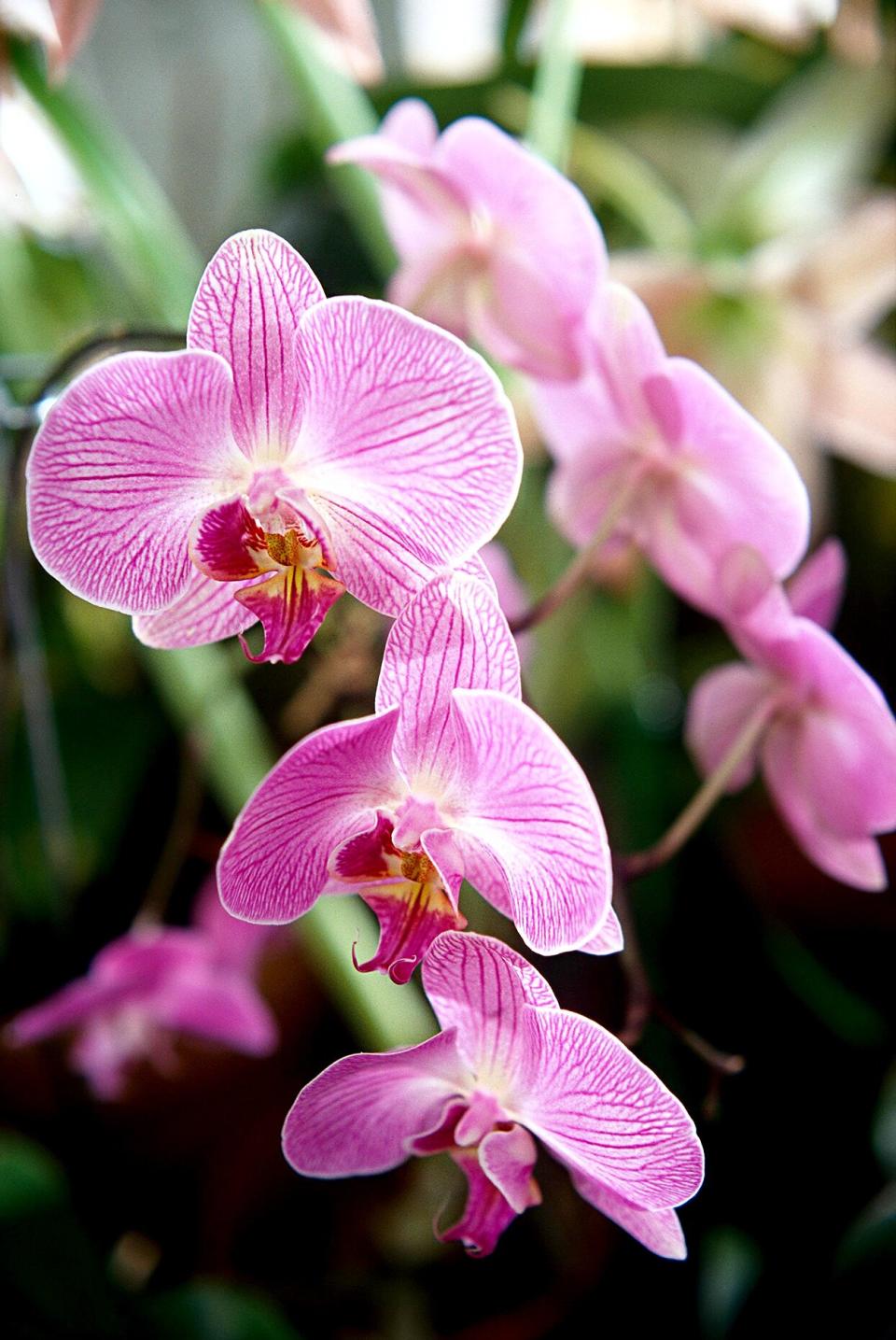11 Tropical Houseplants to Grow for Their Fabulous Flowers

Plants that come from tropical regions of the world often grow well in our warm homes. In addition to their lush leaves, many of these tropical species will produce gorgeous blooms indoors. Some are even fragrant! A few of these plants can be a little more finicky than others to grow when it comes to water and light, but most are fairly easy-care. Even if you're just beginning your houseplant collection, most of these varieties will reward you with colorful flowers without much effort on your part. Here are the best flowering tropical plants to grow, along with tips for keeping them healthy so you can enjoy their beautiful blooms for as long as possible.
African Violet
A classic favorite among plant parents, African violet (Saintpaulia) produces velvety green leaves on short leafstalks. It has clusters of single, semi-double, or double flowers in white, pink, red, violet, purple, blue, lime green, pale yellow, or bicolor. Petals of this tropical flowering houseplant are ruffled, rounded, or fringed.
Size: Up to 12 inches tall
Light: Bright to low, indirect light
Watering: Water when the soil feels dry to the touch. Avoid getting water droplets on the leaves (which will damage them); place the pot in a shallow dish filled with about an inch of water for 30 minutes so the roots can soak up water from the bottom.

Anthurium
A popular tropical houseplant, Anthurium is available in numerous varieties that produce stately, brightly colored blooms. These plants adapt to the low light and erratic humidity of most homes and can bloom almost constantly.
Size: Up to 20 inches tall
Light: Bright, indirect light
Watering: Water when the soil is dry to the touch (Anthurium doesn't like consistently moist soil)

Begonia
Often used as an annual in gardens and outdoor containers, begonias make a pretty indoor plant, too, particularly fibrous and rhizomatous varieties. Many produce foliage that's just as attractive as the clusters of small, colorful blooms.
Size: Up to 18 inches
Light: Bright, indirect light
Watering: Wait until the soil is dry before watering (you can even wait until you see the plant start to droop a little). Avoid splashing water on the leaves, which can encourage diseases.

Bromeliad
Striking and unusual, a bromeliad blooms only once, then slowly forms offshoots before the main plant dies. The offshoots can be repotted as their own plants.
Size: About 3 feet
Light: Medium to bright light
Watering: Pour a small amount of water into the cup-shape leaves in the center of the plant to keep it consistently moist. Empty out the water weekly and refill to prevent it from becoming stagnant.

Calla
The elegant flower of the calla (Zantedeschia) is actually a spathe (a petal-like leaf) that curls around a column of fragrant yellow true flowers. A popular choice for bouquets and flower arrangements, you can find calla in white, pink, yellow, orange, or red.
Size: Up to 3 feet tall
Light: Bright, indirect light
Watering: Keep consistently moist while the plant is in bloom, then let it dry out as the plant dies to encourage new growth.

Clivia
Large clusters of trumpet-shape orange blooms top leathery, dark green leaves on this tropical houseplant. The flowers fade in late spring and are followed by pretty red berries. After repotting Clivia, it may take years to bloom again.
Size: Up to 3 feet tall
Light: Bright, indirect light
Watering: Water deeply to keep the soil a little moist between waterings, but let your plant dry slightly before giving it another drink.

Goldfish Plant
Look closely at the reddish-orange blooms of Columnea gloriosa and you'll see they do resemble small goldfish hiding among the small glossy leaves. This plant grows long trailing stems, so it's a good choice for a hanging basket.
Size: 18 to 24 inches
Light: Bright, indirect light
Watering: Keep the soil slightly moist during the summer, then let it dry out slightly between waterings in the winter.

Gardenia
With large glossy, dark green leaves and fragrant creamy white flowers, Gardenia blooms from spring through fall. It's tricky when grown as a tropical flower indoors because it won't set flowers when warmer than 65°F at night; it also needs high humidity and lots of sunlight, so it works best in a cool greenhouse.
Size: Can grow up to 8 feet outdoors, but are commonly up to 3 feet indoors.
Light: Place in a spot that gets at least half a day of direct sunlight.
Watering: Water when the soil is dry to the touch.

Lipstick Plant
The unusual blooms of lipstick plant are made up of a dark purple tubular cup holding a scarlet flower bud, which inspired its colorful moniker. This plant may only blooms here and there when grown as a tropical houseplant. During the warmer months, you can take your lipstick plant outside where it'll get some extra sun to encourage more flowers.
Size: Up to 20 inches tall
Light: Medium light
Watering: Keep the soil evenly moist

Moth Orchid
The moth orchid (Phalaenopsis) is better known for its striking flowers than for its leathery leaves. It's one of the easier types of orchids to grow indoors, and comes in an array of flower colors. It usually blooms once or twice a year, usually in the cooler winter months.
Size: Up to 1 foot indoors
Light: Low to bright light
Watering: Water once a week or so, just before it feels completely dry to the touch

Peace Lily
The distinctive flower of peace lily is a pure white bract that forms a softly curved backdrop for the central column of tiny, closely set flowers, known as a spadix. It's a favorite indoor tropical plant for its attractive deep green foliage and long-lasting blooms.
Size: Up to 3 feet
Light: Bright to low, indirect light
Watering: Let the soil dry out between waterings.
